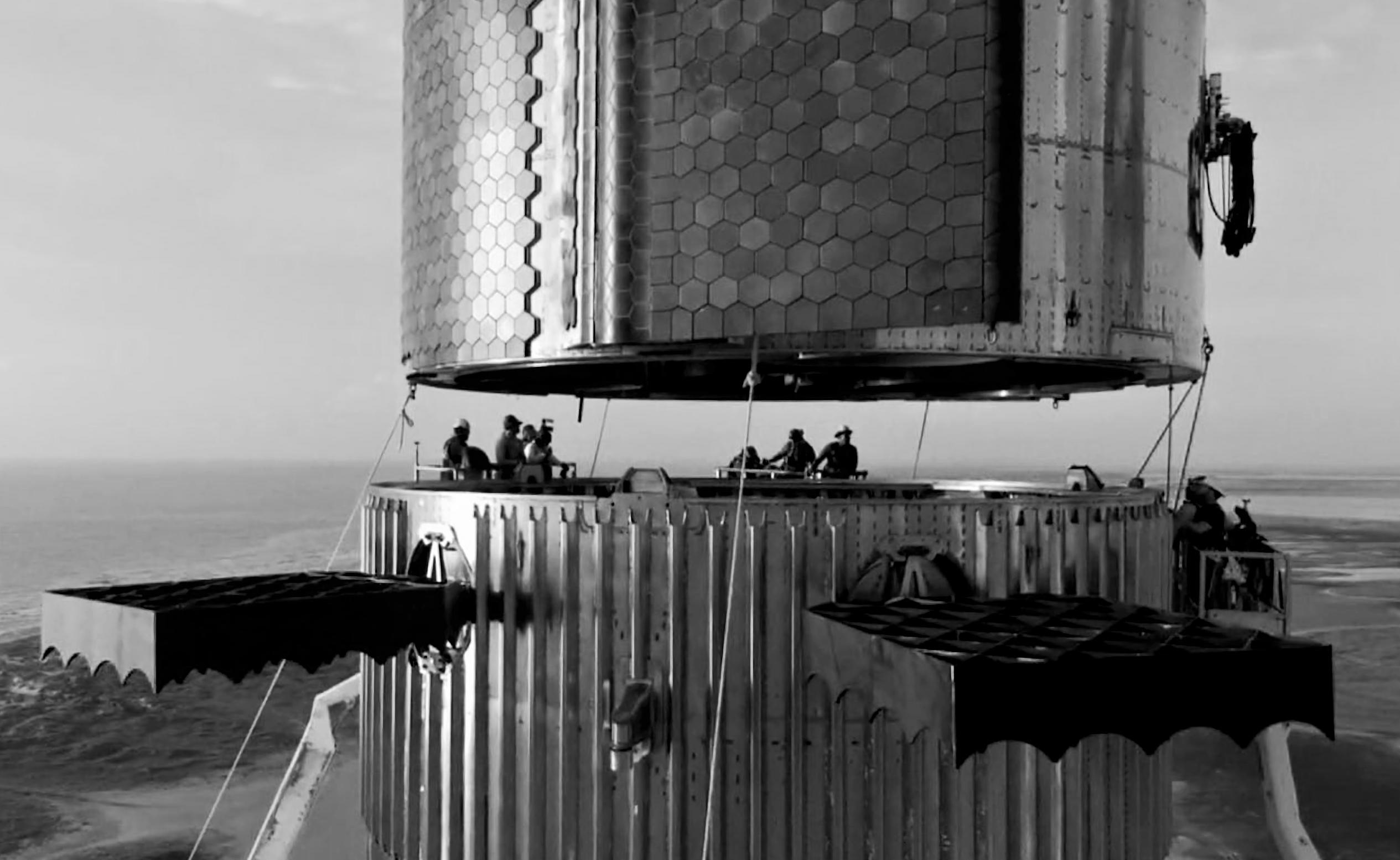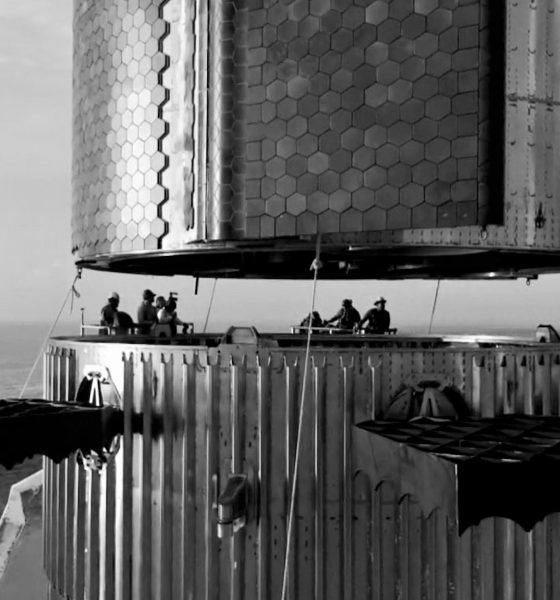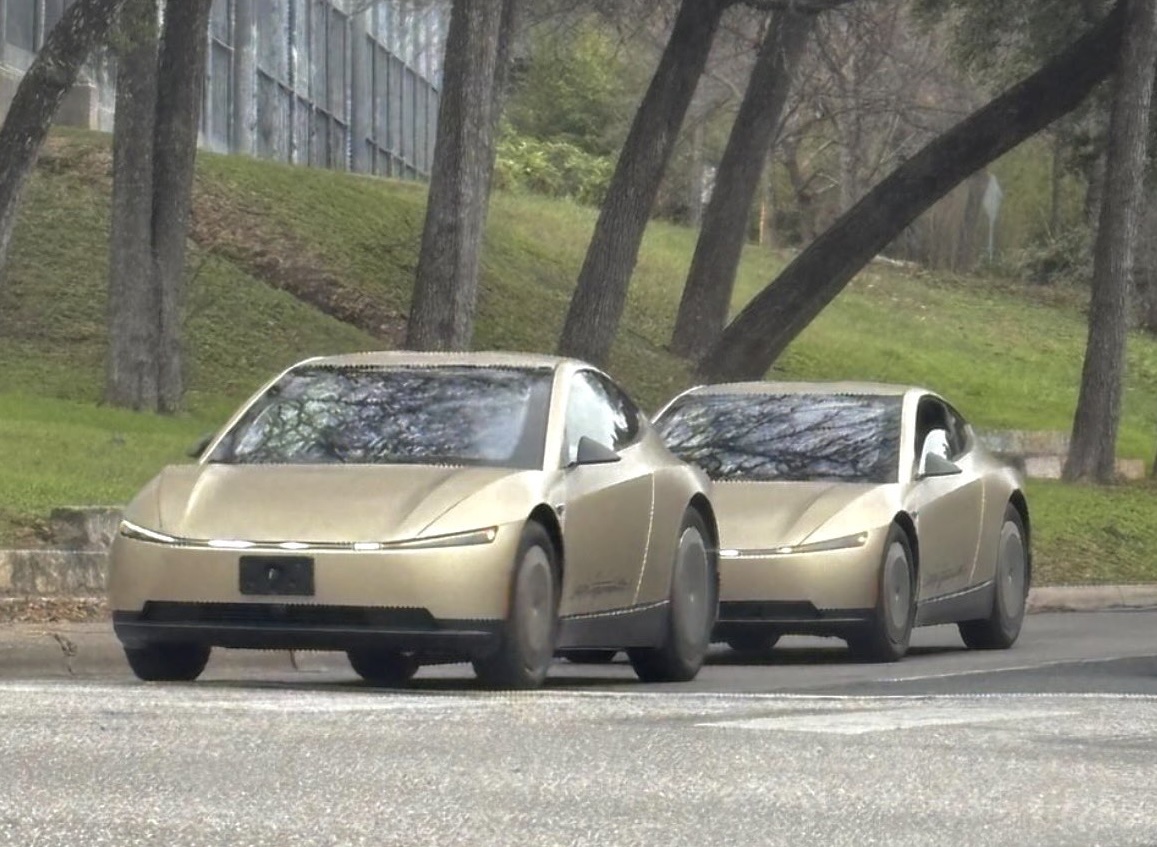

News
SpaceX takes simplicity to new extremes with two new Starship mechanisms
In the first two parts of a three-part interview with YouTube creator Tim Dodd, SpaceX CEO Elon Musk has delved into two new Starship and Super Heavy mechanisms that take his pursuit of simplicity to new extremes.
Around the turn of the month, Starship’s first flightworthy Super Heavy booster was outfitted with a niche form of aerodynamic control surfaces known as grid fins. Those multi-ton car-sized fins have been expected ever since the original form of Starship was first revealed in 2016. What was unexpected, however, was the fact that Booster 4’s grid fins quite clearly had no retraction or deployment mechanism and were instead fixed in a deployed position after installation.
Meanwhile, just a month after SpaceX performed a partial test of the mechanisms meant to latch Starship and Super Heavy together and deploy the ship in flight, Musk says that SpaceX has also decided to almost entirely remove any recognizable separation mechanism.
In rocketry, there are generally two distinct types of launch vehicle separation strategies. All require some kind of actuating latch or frangible bolts to attach and detach stages. The differences arise during stage separation. Some rockets (particularly Russian vehicles) rely on hot staging, in which a separating stage will ignite its engine(s) slightly before or at the same time as its released, blasting the stage below it. More commonly, rocket upper stages are jettisoned a significant difference from lower stages before igniting and heading towards orbit with either small solid rocket motors, small vernier thrusters, or – in SpaceX’s case – spring-like mechanisms that can be tested on the ground and reused.
Sidestepping decades of precedent, Musk says that Starship will have no separation mechanism at all. Instead, at some point during the design or testing process, Musk decided that a separation mechanism was entirely superfluous and that the same effect could be more or less replicated by using existing systems on Super Heavy. By using the booster’s gimballing Raptor engines to impart a small but significant rotation on the rocket moments before separation, Super Heavy could effectively flick Starship away from it – a bit like how SpaceX currently deploys Starlink satellites from Falcon by spinning the upper stage end over end and letting the spacecraft just float away thanks to centripetal forces.
Because Starship is something like five times heavier than Super Heavy at stage separation, the ship would effectively float away from the booster in a straight and stable line, use cold gas thrusters to settle its propellant, and ignite its six Raptor engines to head to orbit. In return for the slightly unorthodox deployment profile, if this new approach works, SpaceX can entirely preclude the development of a pusher/spring system capable of pushing a ~1300 ton Starship away from Super Heavy. That approach is possible on Starship in large part because the ship’s six Raptor engines are completely tucked away inside a skirt, meaning that there is zero chance of nozzles being damaged by impacting the booster interstage.
The situation with Super Heavy’s grid fins is not dissimilar. By keeping the fins deployed at all times, SpaceX doesn’t need to develop a complex retraction mechanism that maintains a mechanical linkage while still providing enough strength to push and drag a several-hundred-ton rocket around at hypersonic speeds.
Notably, during Tim Dodd’s tour and interview, Musk revealed that another SpaceX employee – not him – was responsible for that design change, throwing up a bit of a foil to the common notion that Musk is very authoritarian and inflexible as chief engineer. Combined with a surprisingly elegant and responsive five-step approach to engineering, it’s clearer than ever that there is a great deal of well-considered method behind the surface-level madness of some of Musk and SpaceX’s less intuitive decisions.

Elon Musk
Elon Musk: Tesla Model Y is world’s best-selling car for 3rd year in a row
The Model Y has now established an impressive streak that would otherwise have been impossible before Tesla.

Elon Musk has announced that the Tesla Model Y has become the world’s best-selling car by volume for the third consecutive year, capping 2025 with another dominant performance.
The Model Y has now established an impressive streak that would otherwise have been impossible before Tesla.
Three years in a row
Musk posted on X: “Tesla Model Y is now officially the world’s best-selling car for the third year in a row!” The CEO’s comment echoed an update that Tesla included in its 2025 recap, which highlighted, among other things, the Model Y’s incredible streak.
The Model Y has held the title since 2023, outperforming traditional leaders like the Toyota RAV4 and Corolla thanks to its bang-for-the-buck nature and its stellar combination of practicality, performance, and tech. The Model Y is also lauded as one of the safest vehicles on the road, making it an ideal choice for families in key markets such as China.
An impressive 2025
The Model Y’s sales feat in 2025 is especially impressive considering the introduction of the vehicle’s new variant. Tesla’s changeover to the new Model Y across its global factories resulted in sales being paused for some time in the first quarter. As per Tesla’s Q1 2025 vehicle delivery and production report, “the changeover of Model Y lines across all four of our factories led to the loss of several weeks of production in Q1.”
This suggests that the Model Y’s sales remained strong in 2025 to the point where it could still claim the title of the world’s best-selling vehicle by volume, even with its sales being throttled during the first quarter of the year. It would then be interesting to see just how far the Model Y can go in 2026, especially considering the rollout of new variants like the six-seat extended wheelbase Model Y L, the affordable Model Y Standard, and the top-tier Model Y Performance.
News
Tesla shares epic 2025 recap video, confirms start of Cybercab production
The cinematic montage, posted by the official Tesla account on X, celebrated the company’s progress in EVs, energy, and Robotaxi development.

Tesla has released an epic year-in-review video for 2025, recapping some of its major achievements from refreshed models to autonomy breakthroughs and production ramps.
The cinematic montage, posted by the official Tesla account on X, celebrated the company’s progress in EVs, energy, and Robotaxi development while looking ahead to an even bigger 2026.
Tesla’s 2025 highlights recap
Tesla has had a busy 2025, as highlighted in the recap video. The video opened with Elon Musk explaining the company’s pursuit of sustainable abundance. A number of milestones were then highlighted, such as the rollout of FSD v14, Optimus’ numerous demos, the opening of the Tesla Diner in Hollywood, LA, the completion of the world’s first autonomous car delivery, and the launch of the Robotaxi network in Austin and the San Francisco Bay Area.
Tesla also highlighted several of its accomplishments over the year. As per the company, the Model Y was the year’s best-selling vehicle globally again, and Teslas became more affordable than ever thanks to the Model 3 and Model Y Standard. Other key models were also rolled out, such as the refreshed Model S and X, as well as the new Model Y, the new Model Y Performance, and the six-seat, extended wheelbase Model Y L.
The Megablock was also unveiled during the year, and the Supercharger Network grew by 18%. Over 1 million Powerwalls were also installed during the year, and the Cybertruck became the first EV truck to get both an IIHS Top Safety Pick+ award and an NHTSA 5-Star safety rating.
Cybercab production confirmed
Interestingly enough, Tesla also confirmed in its 2025 recap video that the production of the Cybercab has started. This bodes well for the vehicle, as it could result in the vehicle really being mass-produced in the first half of 2026. Elon Musk confirmed during the 2025 Annual Shareholder Meeting that Cybercab production should earnestly start around April 2026.
Musk has also noted that the Cybercab will be Tesla’s highest-volume vehicle yet, with the company aiming for an annual production rate of about 2 million units. “If you’ve seen the design of the Cybercab line, it doesn’t look like a normal car manufacturing line,” Musk said earlier this year. “It looks like a really high-speed consumer electronics line. In fact, the line will move so fast that actually people can’t even get close to it.”
News
Tesla Cybercab is changing the look of Austin’s roads, and it’s not even in production yet
Videos and photos showed the sleek, two-seat autonomous vehicles navigating traffic.

Even before entering production, Tesla’s Cybercab is already transforming the appearance of Austin’s streets, with multiple prototypes spotted testing in downtown areas recently.
Videos and photos showed the sleek, two-seat autonomous vehicles navigating traffic. Interestingly enough, the vehicles were equipped with temporary steering wheels and human safety drivers.
Recent Cybercab sightings
Over the weekend, enthusiasts captured footage of two Cybercabs driving together in central Austin, their futuristic silhouettes standing out amid regular traffic. While the vehicles featured temporary steering wheels and side mirrors for now, they retained their futuristic, production-intent exterior design.
Industry watcher Sawyer Merritt shared one of the vehicles’ videos, noting the increasing frequency of the autonomous two-seater’s sightings.
Previewing the autonomous future
Sightings of the Cybercab have been ramping in several key areas across the United States in recent weeks. Sightings include units at Apple’s Visitor Center in California, the Fremont factory test track, and in Austin’s streets.
The increased activity suggests that Tesla is in overdrive, validating the autonomous two-seater ahead of its planned volume production. Elon Musk confirmed at the 2025 Shareholder Meeting that manufacturing begins around April 2026 with ambitious targets, and during an All-Hands meeting earlier this year, Musk hinted that ultimately, Tesla’s factories should be able to produce one Cybercab every 10 seconds.







